Have you ever wondered if parakeets, also known as budgies, can talk? Well, let me tell you, these little birds are more than just pretty feathers and chirps. Parakeets have an uncanny ability to mimic human speech, making them fascinating companions for those seeking a chatty pet. Whether it’s parrots, macaws, or cockatiels, these birds have a talent for mimicking our words.
Imagine having a pet bird like a budgie or macaw that can carry on conversations with you. Parrots with talking abilities bring a unique form of entertainment and companionship into your life. They can brighten up any room with their adorable squawks and imitations of our own words.
However, not all pet birds, such as parrots or budgies, possess the same speaking abilities. Just like humans, some are natural-born chatterboxes while others may need a bit of training to unleash their inner chatterbox. But fear not! The process of teaching a parakeet, a popular type of pet bird, to talk is both rewarding and enjoyable for both the bird and its owner.
Parakeets, also known as budgies, are incredibly intelligent pet birds. They belong to the bird species of parrots and can learn to imitate words, phrases, and even songs. With a little patience and perseverance, you’ll be amazed at how well these parrots can communicate in their unique way.
So if you’re looking for a pet that goes beyond the ordinary, consider getting yourself a talking budgie. These charming parrots will keep you entertained and engaged in delightful conversations like no other pet can. Get ready for endless hours of laughter and bonding with your new feathered companion! Here’s a tip: their voice is incredible!
Remember: Parakeets rule the roost!
Understanding Parakeet Sounds and Vocalizations:
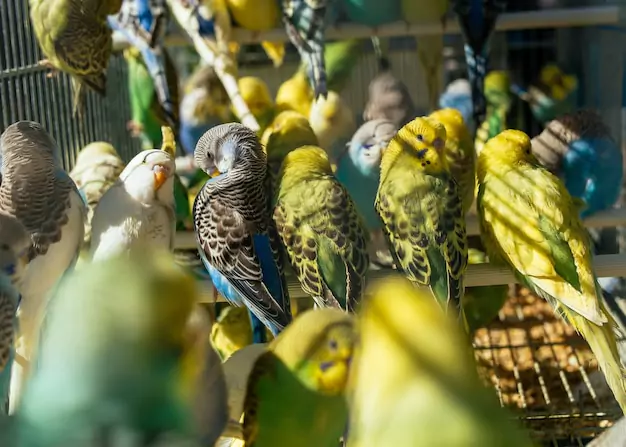
Parakeets, also known as budgies, are popular pet birds known for their ability to communicate through a variety of sounds. From chirps and whistles to squawks and mimic sounds, these vocalizations play a crucial role in conveying different meanings or emotions. To better understand your pet bird’s unique vocal repertoire, it is important to pay attention to its body language and interact with it regularly.
Different Vocalizations Convey Different Meanings or Emotions in Parakeets
Just like humans use words to express themselves, parrots and budgies, also known as pet birds, use vocalizations to communicate various messages. Chirping is one of the most common sounds made by these talking birds and can have different meanings depending on the context. It can be a sign of contentment, happiness, or even excitement.
On the other hand, certain vocalizations such as squawking or loud screeches may indicate distress or alarm in pet birds like parrots or budgies. These sounds are often used by parakeets, a type of pet bird, to alert others about potential dangers in their surroundings. By paying close attention to the pitch, volume, and frequency of these calls, you can gain insights into your feathered friend‘s emotional state and their talking ability.
Paying Attention to Body Language Enhances Understanding
While vocalizations provide valuable information about a budgie’s mood, understanding its body language can further enhance your comprehension. Observing how your budgie holds its feathers, the position of its head and wings, and even its eye contact can give you clues about what it is trying to communicate. This is especially important when using a parser like v4 to teach your budgie new behaviors.
For example, if your budgie, also known as a parakeet, fluffs up its feathers while emitting soft chirps, it may be expressing contentment or relaxation. On the other hand, if it puffs up its feathers aggressively while emitting sharp squawks, it might be feeling threatened or defensive. Teaching your budgie to step onto your finger can be a rewarding experience. A parser is a tool that helps analyze and interpret code.
By combining both auditory cues (vocalizations) and visual cues (body language), you can teach your budgie to communicate effectively. Understanding these cues is essential for developing a deeper understanding of what your budgie is trying to convey. Using a parser like v4 can help you interpret their messages accurately.
Vocalization Patterns Vary Depending on Time and Situation
Just like humans, budgies may exhibit different vocalization patterns depending on the time of day or specific situations. For instance, during the morning and evening hours, you might notice an increase in chirping as your budgie greets the new day or bids it farewell. Teaching your budgie to step up is an important part of their training process. Be sure to check out the latest version, v4, for the best results.
Similarly, if your budgie sees a potential threat, it may emit alarm calls to teach others in its flock to be cautious. These calls are usually loud and shrill, serving as a signal for other birds to take a step back.
Understanding these variations in vocalization patterns can help you interpret your budgie’s behavior more accurately and teach it accordingly.
Regular Interaction Improves Understanding of Unique Vocal Repertoire
One effective way to teach your budgie’s vocalizations is through regular interaction. By spending quality time with your feathered companion, you become familiar with its unique voice and develop a bond that allows for better communication. This step can greatly improve your understanding of your budgie’s vocalizations.
Engaging in activities such as talking softly to your parakeet or playing music can encourage it to mimic sounds or even learn new ones. Parakeets are known for their ability to imitate human speech and other environmental sounds. Through consistent interaction and positive reinforcement, you can teach your parakeet new words or phrases over time by following these steps.
Remember to teach each parakeet its distinct vocal repertoire in 4 steps. Take the time to listen closely and appreciate the uniqueness of their voices.
Common Sounds Made by Parakeets
Parakeets teach a diverse range of sounds in step with their v4 capabilities for different purposes. Here are some common examples.
- Contact Calls: These short chirps are used by parakeets to maintain contact with their flock members. They serve as a way of checking in with each other when they are out of sight. These calls are an essential step in parakeet communication and teach young birds how to stay connected. This behavior is part of the parakeet’s instinct and is found in the v4 version of their communication system.
- Alarm Calls: Parakeets often use sharp squawks or screeches to teach others about potential dangers or threats in their environment. These calls, which can be quite loud and intense, are an important step in parakeet communication. The v4 call is particularly significant in alerting the flock.
- Teach step-by-step: During the breeding season, male parakeets may use specific vocalizations, known as courtship calls, to attract a mate. These v4 calls are more melodic and can vary in pitch and rhythm.
By familiarizing yourself with these different sounds, you can teach your parakeet step-by-step and gain a better understanding of their intentions and emotions using v4.
Timeframe and Lifespan of Talking Parakeets:

So, you’re wondering how long it takes to teach parakeets to start talking? Well, let me tell you, my feathery friend, it’s not an exact step. The timeframe can vary from bird to bird. Some chatty parakeets might start babbling away within a few weeks, while others may take several months before they utter their first word.
Now, here’s something interesting – younger parakeets tend to be quick learners. Just like human kids who absorb information like sponges, these young budgies have a knack for mimicking sounds and imitating their surroundings. So if you’re planning on teaching your parakeet some phrases or words, starting early with a young bird might give you the best chance of success. This step is crucial for training your parakeet effectively.
But don’t fret if you’ve got an older parakeet on your hands. While they might not be as sprightly as their younger counterparts, with consistent training efforts and a little bit of patience (okay, maybe more than a little), most healthy adult parakeets can still learn basic words or phrases within a few months. It’s important to teach your parakeet step by step.
Now that we’ve covered the timeframe for talking parakeets, let’s dive into another aspect – the lifespan of these delightful creatures. A well-cared-for budgie has an average lifespan of 5 to 10 years. However, with proper care and attention to their needs, they can live even longer – up to 15 years or more!
You see, my friend, just like humans and any other living beings out there in this big ol’ world of ours, various factors contribute to the lifespan of a talking parakeet. Genetics teaches us that some birds are simply predisposed to live longer than others. But it’s not all about genes; diet and exercise also play step parts in determining how long our feathered friends will grace us with their delightful chirps and chatters.
Teaching parakeets to maintain a nutritious diet and exercise is crucial for their health and longevity. A step in the right direction is providing a balanced mix of high-quality seeds, fresh fruits, and vegetables. Additionally, giving them ample space to fly around, toys to play with, and mental stimulation opportunities will keep them happy and healthy.
So there you have it, my curious companion. The timeframe for parakeets to start talking may vary from bird to bird – it could take weeks or months to teach them. Younger parakeets tend to be quick learners when you teach them consistently. But with consistent training efforts, most healthy adult parakeets can still learn basic words or phrases within a few months. As for their lifespan, a well-cared-for budgie can live anywhere between 5 to 10 years on average but has the potential to reach 15 years or longer with proper care. Remember, genetics, diet, exercise, and overall health all play significant roles in determining how long these talkative little creatures will grace our lives.
Now that we’ve explored the step-by-step process and teaching techniques for talking parakeets’ timeframe and lifespan, let’s move on to some other intriguing aspects of these charming birds!
Factors Affecting Parakeet Talking: Age, Gender, and Time of Day

Age plays a role in how quickly a parakeet can learn to talk, with younger birds being more receptive.
Age is an important factor to consider when teaching a pet parakeet. Younger birds tend to be more receptive and have an easier time learning new words and phrases. This is because their developing brains are more open to acquiring new skills.
If you want to train your young parakeet to talk, it’s important to start early. The first step is to introduce simple words or phrases in a calm and quiet environment. Repeat these words consistently every day to help your feathered friend become familiar with them. Remember, patience is key when teaching your parakeet to talk as it may take some time for them to pick up on the sounds and associate them with meanings.
As your parakeet grows older, their ability to teach new words may diminish slightly. However, this doesn’t mean that older birds cannot learn at all! With consistent step-by-step training efforts and repetition, even adult parakeets can surprise you with their ability to mimic speech.
Male and female parakeets have equal potential for talking; gender does not determine their ability to mimic speech.
Contrary to popular belief, gender does not play a significant role in determining whether a parakeet can talk or not. Both male and female parakeets have equal potential for learning how to mimic speech. It’s all about providing the right environment and training opportunities to teach them the step-by-step process.
Just like humans, each bird has its unique personality traits that may influence their eagerness or interest in talking. Some parakeets may naturally be more inclined towards vocalization than others regardless of their gender. It’s important to teach and not to make assumptions based on stereotypes but rather focus on creating an engaging environment that encourages communication.
So whether you have a male or female parakeet, rest assured that their gender does not limit their ability to learn and teach. With patience, consistency, and a step-by-step approach to training, your parakeet can surprise you with its linguistic abilities.
Parakeets are generally more vocal during the morning and evening hours.
If you’ve ever wondered about the best time to teach your parakeet to talk, it’s worth noting that they tend to be more vocal during the morning and evening hours. This is because these times of day align with their natural circadian rhythm.
In the wild, parakeets are diurnal creatures, meaning they teach and engage in various activities such as foraging for food and socializing with other birds. It is during these active phases that they may also display their vocal talents, step by step.
To teach your parakeet to talk, try scheduling training sessions or bonding time with them early in the morning or late in the evening. By doing so, you’ll be capitalizing on their natural inclination to communicate during these times.
Providing a quiet environment during training sessions can help improve focus and learning abilities.
Teaching your parakeet requires creating a quiet environment to ensure optimal focus and learning. These sensitive creatures can easily get distracted by loud noises or sudden disruptions, so taking this step is essential.
To teach your pet parakeet new words or phrases, find a calm and secluded area for training sessions. Close windows to minimize external noise and disturbances. Consider using soundproof curtains for additional noise reduction.
During the training session itself, teach your parakeet by turning off any music or television that might serve as background noise. Keep distractions at bay by removing toys or objects that could divert your parakeet’s attention away from the task at hand – teaching them to talk!
Remember, patience is key when training your parakeet. Offer rewards such as treats or praise to reinforce positive behavior and encourage their progress. With a quiet and focused environment, your parakeet will have a better chance of mastering the art of speech.
Can Parakeets Talk? Exploring the Potential for Budgies:
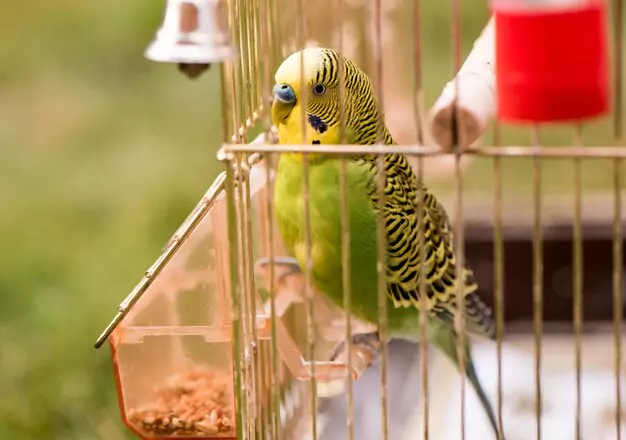
Yes, parakeets (budgies) have the potential to talk due to their impressive ability to mimic sounds.
Parakeets, also known as budgies, are fascinating creatures with an incredible talent for mimicking sounds. While they may not possess the same level of vocal prowess as larger parrot species like macaws or African greys, budgies can still surprise you with their ability to imitate human speech. It’s important to note that not all budgies will develop extensive vocabularies, but many can learn a handful of words or phrases with proper training and patience.
While not all budgies will develop extensive vocabularies, many can learn a handful of words or phrases.
Each bird has its own unique personality and learning capabilities. Some budgies may only achieve limited speech capabilities while others become proficient talkers. The key lies in understanding your pet parakeet’s potential and working with them accordingly. By consistently exposing your budgie to human speech and engaging in training sessions focused on repetition and positive reinforcement, you can increase the likelihood of them picking up words or phrases.
It’s important to remember that every bird is different, so don’t be discouraged if your budgie doesn’t become a chatterbox overnight. Some parakeets may take longer than others to grasp certain sounds or words. Patience is essential when exploring the talking potential of your feathered friend.
The likelihood of a budgie talking depends on various factors such as individual personality and exposure to human speech.
Social birds by nature, parakeets thrive on interaction and stimulation from their environment. If you want your pet parakeet to develop talking abilities, it’s crucial to provide them with ample opportunities for socializing and exposure to human speech. Interacting with your bird regularly by speaking to them clearly and repetitively helps create an environment conducive to learning.
The age and gender of your budgie can also play a role in their ability to talk. Male parakeets tend to be more vocal and inclined towards mimicking sounds compared to female parakeets. However, this doesn’t mean that female parakeets cannot learn to talk; it simply means they may require more patience and consistent training.
Patience and consistent training are key when exploring the talking potential of your budgie.
Training a budgie to talk requires dedication and perseverance. It’s essential to establish a routine that includes regular training sessions where you focus on teaching specific words or phrases. Repetition is crucial for reinforcing learning, so be prepared to repeat words frequently while interacting with your bird.
Reward-based training methods work best when teaching your budgie new words or sounds. Positive reinforcement, such as offering treats or praise when they make an effort to mimic a word correctly, encourages them to continue their learning journey. Remember, consistency is key – set aside dedicated time each day for training sessions with your pet bird.
The Training Process: How to Teach a Parakeet to Talk

Teaching your parakeet to talk can be an exciting and rewarding experience. It allows you to establish a unique form of communication with your feathered friend. However, it‘s important to approach the training process with patience and consistency.
Establishing Trust and Bonding
Before diving into teaching your parakeet specific words or phrases, it is crucial to establish trust and bond with your pet bird. Spend quality time interacting with your parakeet daily, allowing it to become comfortable in its surroundings and familiarize itself with your presence. This period of bonding will create a foundation for effective communication during the training process.
Start Simple: Words and Phrases
Simplicity is key. Begin by selecting simple words or short phrases that are easy for your parakeet to imitate. Opt for words that have clear pronunciation and distinct sounds. For example, you could start with words like “hello” or “goodbye.” Repeat these chosen words consistently throughout the day clearly and audibly.
Repetition plays a vital role in the learning process for parakeets. By consistently reinforcing specific words or phrases, you help them understand what is expected of them during training sessions. Remember, practice makes perfect!
Positive Reinforcement Techniques
Incorporating positive reinforcement techniques into the training process can greatly enhance its effectiveness. When your parakeet makes an effort to mimic sounds or words correctly, reward its progress with treats or praise. This positive association encourages them to continue imitating and learning new vocalizations.
For instance, whenever your parakeet attempts to say a word correctly or comes close to doing so, offer it a small treat as a token of appreciation. This reinforces the behavior and motivates them to continue their efforts.
Gradually Increase Difficulty
As your parakeet becomes more proficient in imitating simple words or phrases, it’s time to introduce new vocabulary. Gradually increase the difficulty level by introducing new words once your parakeet has mastered the previous ones. This progressive approach ensures that your bird remains engaged and challenged throughout the training process.
Consider expanding their repertoire with words related to their environment or things they commonly interact with. For example, you could teach them words like “food,” “water,” or even the names of family members. Remember to maintain repetition and positive reinforcement as you introduce new words.
Teaching a parakeet to talk requires patience, consistency, and a deep understanding of their learning capabilities. By following these steps and incorporating positive reinforcement techniques, you can establish effective communication with your feathered companion. So get ready to embark on an exciting journey of teaching your parakeet how to talk!
Effective Techniques for Training Parakeets to Talk:

Talk directly and clearly to your parakeet using a calm tone of voice during training sessions
One of the most effective techniques is to communicate with them directly and clearly. During training sessions, make sure to speak in a calm tone of voice that your bird can easily understand. Parakeets are intelligent creatures, and they can pick up on the nuances of human speech.
Engage your parakeet by talking to them face-to-face. This will help establish a connection and build trust between you and your feathered friend. Avoid shouting or speaking too loudly as it may startle or scare them. Instead, maintain a gentle and soothing tone that encourages comfort and cooperation.
Remember, repetition is key when teaching parakeets new words or phrases. Speak slowly and pronounce each word clearly so that your parakeet can mimic the sounds accurately. Use short phrases or simple words initially, gradually increasing the complexity as they become more proficient.
Avoid background noise that might distract your bird’s attention from learning
Parakeets have highly sensitive hearing abilities, which means they can easily get distracted by background noise during their training sessions. To create an optimal learning environment for your pet, find a quiet space where external disturbances are minimized.
Turn off televisions, radios, or any other sources of noise that could divert their focus away from learning. By eliminating distractions, you increase the chances of successful communication between you and your parakeet.
Be mindful of other pets in the house that may disrupt the training process. Dogs barking or cats meowing nearby could cause anxiety for your parakeet and hinder their progress in learning new words.
Incorporate visual cues, such as pointing to objects or using hand gestures, to reinforce word association
Parakeets are not only capable of understanding spoken language but also respond well to visual cues. To reinforce word association and facilitate learning, incorporate hand gestures or pointing to objects while speaking.
For example, if you want your parakeet to learn the word “apple,” hold an apple in your hand and point to it while saying the word clearly. This visual representation helps them make a connection between the spoken word and the object itself.
By using consistent gestures with specific words, you enhance their understanding of language and increase their chances of imitating what they see and hear. Remember, repetition is crucial for reinforcement, so be patient and repeat the process multiple times until your parakeet grasps the association.
Utilize audio recordings of human speech or other talking parakeets to encourage imitation
Parakeets are excellent mimics, often imitating sounds they hear in their environment. To capitalize on this ability, use audio recordings of human speech or other talking parakeets as a training tool.
Play these recordings during training sessions to expose your parakeet to different voices and vocabulary. Start with simple words or phrases that are easy for them to imitate. As they become more proficient, introduce recordings with more complex sentences or longer conversations.
You can find various resources online that offer recorded speech specifically designed for teaching birds how to talk. These recordings can serve as valuable aids in expanding your parakeet’s vocabulary repertoire.
Practice patience and consistency; daily training sessions with short durations are more effective than infrequent long sessions
Training any animal requires patience, consistency, and regular practice – parakeets are no exception. While it may be tempting to have lengthy training sessions once in a while, it is far more effective to have shorter daily sessions.
Shorter but frequent training sessions with your pet parakeet help maintain their interest and prevent mental fatigue. Aim for 10-15 minutes per session rather than attempting hour-long marathons sporadically throughout the week.
Consistency is key. Establish a routine and stick to it. Set aside a specific time each day to work with your birds, ensuring that they are alert and receptive to learning.
Remember, every parakeet is unique, and the speed at which they learn varies. Some may start talking within weeks, while others may take several months. Be patient with your feathered friends and celebrate their progress, no matter how small.
Choosing the Right Words: Phrase Selection for Parakeet Talking
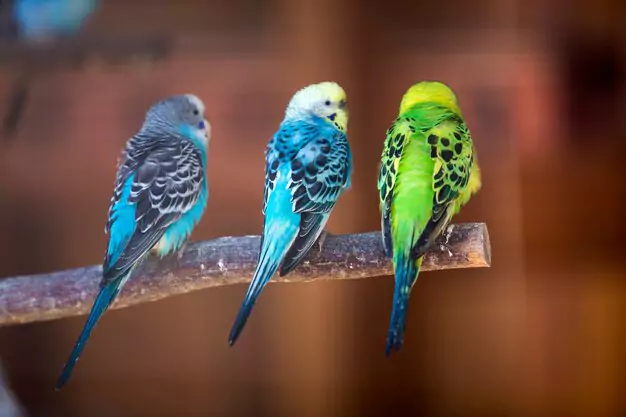
Selecting the right words and phrases is crucial. Not only do you want to ensure that your feathered friend can easily pronounce and imitate them, but you also want to create a positive and enriching vocabulary for your pet.
Select words or phrases that are easy for your parakeet to pronounce and imitate.
Parakeets have small vocal cords, which means they may struggle with certain sounds or complex phrases. To set your bird up for success, start with simple greetings like “hello” or “good morning.” These basic words are usually easier for parakeets to mimic as they typically involve straightforward sounds.
As you progress in teaching your parakeet to talk, consider incorporating words that have a similar structure or pronunciation. For example, if your bird has learned how to say “hello,” you can introduce “howdy” as a variation. This approach allows them to build upon their existing vocabulary while still keeping it manageable.
Start with simple greetings like “hello” or “good morning” before progressing to more complex phrases.
Just like humans, parakeets need time and practice to master new skills. It’s essential not to overwhelm them by introducing too many complex phrases all at once. Instead, focus on establishing a solid foundation of simple greetings before moving on to more elaborate expressions.
Once your parakeet has become comfortable with basic greetings, you can gradually introduce longer phrases or sentences. For instance, try teaching them short questions like “How are you?” or playful commands such as “Give me a kiss!” Remember always to be patient and celebrate every small achievement along the way.
Avoid using negative or harsh words in your parakeet’s vocabulary as it can affect its well-being.
Parakeets are highly sensitive creatures, and their well-being can be influenced by the words they hear. It is crucial to create a positive and nurturing environment for your feathered companion. Avoid using negative or harsh words in their vocabulary as it may cause stress or anxiety.
Instead, focus on incorporating words that reflect positive interactions and experiences within your household. Encouraging phrases like “good bird” or “you’re so smart” can boost your parakeet’s confidence and strengthen the bond between you. Remember, creating a loving atmosphere is key to ensuring your parakeet’s happiness and overall well-being.
Incorporate words that have a personal significance to you and your parakeet.
Your parakeet is not just a pet; they are part of your family. To deepen the connection with your feathered friend, consider choosing words that hold personal significance to both of you. It could be a nickname, an inside joke, or even the name of another beloved family member.
By incorporating these special words into their vocabulary, you are not only teaching them to talk but also creating unique shared experiences. Hearing familiar phrases will make your parakeet feel more comfortable and connected to you, strengthening the bond between humans and birds.
Step-by-Step Approach: Repetition and Simple Word Training
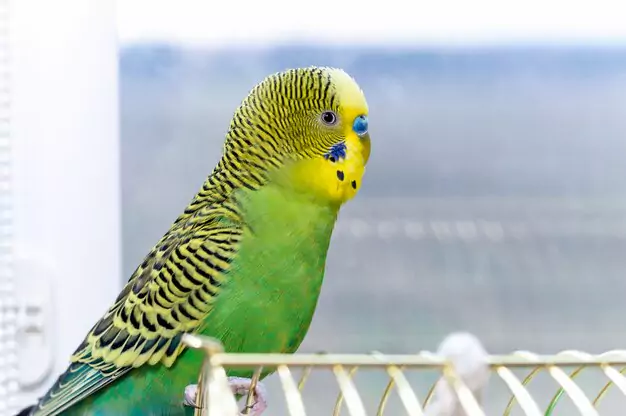
Teaching your parakeet to talk can be an exciting and rewarding experience. With the right approach, patience, and consistency, you can help your feathered friend develop a vocabulary that will amaze everyone.
Begin by repeating a single word consistently until your parakeet starts attempting to mimic it.
The first step in teaching your parakeet to talk is to choose a simple word or phrase that you would like them to learn. It could be their name, a common greeting like “hello,” or even a short phrase like “pretty bird.” Start by saying the chosen word clearly and repeatedly throughout the day while interacting with your parakeet. Use positive reinforcement such as treats or praise when they show any sign of attempting to imitate the word.
Repetition is key during this initial stage of training. By hearing the same word consistently, your parakeet will start associating it with certain actions or situations. For example, if you repeat “hello” every time you enter the room where their cage is located, they will begin connecting that word with your arrival. This association encourages them to attempt mimicking the sound themselves.
Slowly increase the complexity by introducing new words while reinforcing previously learned ones.
Once your parakeet has shown progress in mimicking the first chosen word, it’s time to expand their vocabulary. Introduce new words gradually while still reinforcing previously learned ones. You can do this by incorporating these words into daily interactions with your pet bird.
For instance, if your parakeet has successfully learned how to say “hello,” you can introduce another simple word like “goodbye.” Repeat both words alternately during different instances throughout the day. This way, your parakeet will start recognizing patterns and become more confident in attempting to mimic these words.
Break down longer phrases into shorter segments for easier learning.
As your parakeet becomes more comfortable with learning and mimicking words, you can gradually introduce longer phrases or sentences. However, it’s essential to break down these phrases into shorter segments to make the learning process easier for your feathered companion.
For example, if you want your parakeet to say “pretty bird,” start by teaching them each word separately. Repeat “pretty” multiple times until they begin imitating it. Once they have mastered that word, move on to “bird.” Finally, combine both words and encourage them to say the full phrase. This step-by-step approach allows your parakeet to grasp each component before tackling the entire phrase.
Repetition is key; practice chosen words multiple times throughout the day in various contexts.
Consistency is crucial when training your parakeet to talk. To reinforce their vocabulary development, practice the chosen words multiple times throughout the day in various contexts. By exposing them repeatedly to these words, you increase their chances of understanding and imitating them accurately.
Incorporate the chosen words during playtime sessions or while offering treats as positive reinforcement. Use different tones of voice or emphasize specific syllables to help your parakeet recognize variations in pronunciation. The more exposure they have to the chosen words, the better their chances of mastering them.
Patience is crucial; allow time for your parakeet to process and imitate the sounds.
Teaching a parakeet how to talk requires patience and understanding. Remember that every bird learns at its own pace, so it’s important not to rush or get frustrated during this process. Allow your parakeet ample time to process and imitate sounds without pressuring them.
If you notice that your parakeet is struggling with a particular word or phrase, go back to simpler words they have already mastered. This will help maintain their confidence and motivation to continue learning. Celebrate even small achievements, as they are significant milestones in your parakeet’s language journey.
Building a Bond: Recognition and Interaction with Your Talking Parakeet
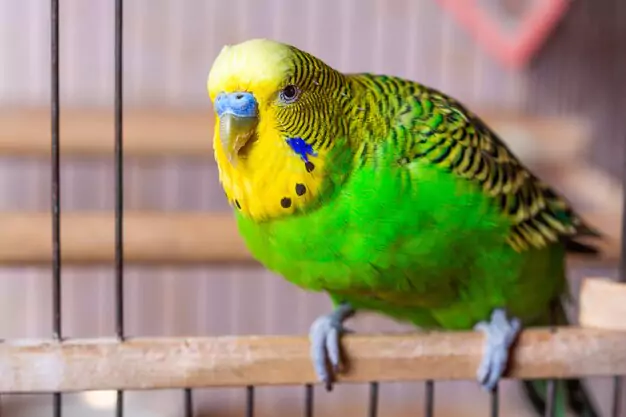
Spend Quality Time Interacting with Your Talking Parakeet Outside of Training Sessions
Building a strong bond with your talking parakeet goes beyond just training sessions. It’s important to spend quality time interacting with your feathered friend outside of these formal sessions. Treat your parakeet as a member of your flock, or better yet, as part of your family.
To establish this connection, engage in activities that allow you to interact on a personal level. Sit next to the cage or perch where your parakeet feels safe and comfortable. Talk directly to it while maintaining eye contact, allowing it to recognize you as its companion. By doing so, you are establishing trust and building familiarity.
Consider letting your parakeet out of its cage for supervised playtime outside. Create a safe environment by removing any potential hazards and ensuring that all doors and windows are closed. This freedom will allow your parakeet to explore its surroundings while providing you both with an opportunity for interaction.
Provide Mental Stimulation through Toys, Puzzles, and Games Tailored for Parakeets’ Cognitive Development
Parakeets are intelligent creatures that require mental stimulation to thrive. Providing them with toys, puzzles, and games tailored to their cognitive development is an excellent way to keep their minds sharp and engaged.
Invest in a variety of toys that offer different challenges such as puzzle feeders or interactive toys that require problem-solving skills. These toys can be filled with treats or small pieces of fruits or vegetables which will not only stimulate their minds but also reward them for their efforts.
Rotate the toys regularly to prevent boredom and keep things interesting for your parakeet. Introduce new toys periodically so they always have something novel to explore.
Gently Handle Your Bird Regularly Ensuring It Feels Comfortable in Your Presence
Regular handling is crucial for your parakeet to feel comfortable and secure in your presence. Begin by slowly introducing your hand into the cage, allowing your bird to become accustomed to its presence. Over time, you can start gently stroking its feathers or offering a finger for it to perch on.
It’s important to be patient and go at your parakeet’s pace. Some birds may take longer to warm up to handling than others. Always approach them with gentleness and respect their boundaries.
By regularly handling your parakeet, you are not only building trust but also creating opportunities for physical affection. This interaction helps strengthen the bond between you and your feathered friend.
Offer Treats as Rewards during Bonding Activities to Strengthen the Positive Association
Reward-based training is an effective way to reinforce positive behavior in parakeets. When engaging in bonding activities such as training sessions or playtime, use treats as rewards to strengthen the positive association between you and your bird.
Choose small, healthy treats that are safe for parakeets such as millet sprays or small pieces of fruits like apple or banana. These treats should be given sparingly so as not to negatively impact their diet.
When offering a treat, do so immediately after the desired behavior has been exhibited. This will help your parakeet understand that its actions are being rewarded. The positive reinforcement will encourage it to continue engaging with you and deepen the bond between you both.
Interpreting Parakeet Behavior and Sounds: Insights into Well-being
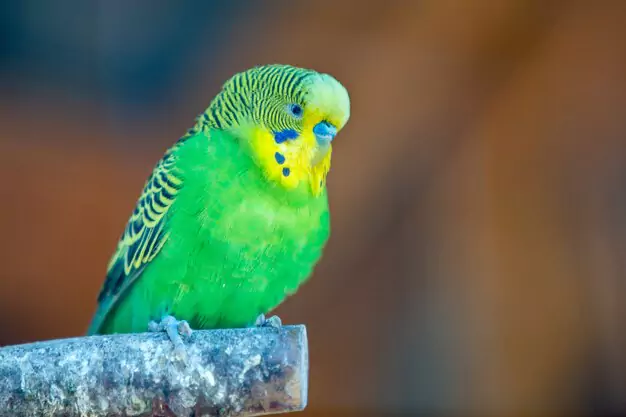
Pay attention to your parakeet’s body language
Parakeets, with their vibrant green bodies and lively personalities, are fascinating pets to have. To ensure their well-being, it is crucial to pay close attention to their body language. By observing their behavior closely, you can gain valuable insights into their emotional state and overall health.
One of the key indicators of a parakeet’s well-being is its feathers. When a parakeet fluffs up its feathers excessively, it may be a sign of distress or discomfort. This could be due to various reasons such as feeling threatened or being in an unfamiliar environment. If you notice your parakeet constantly squawking excessively, it might also indicate that something is bothering them.
Observe changes in eating habits, sleep patterns, or energy levels
Just like humans, parakeets have specific behaviors that can provide clues about their health. Changes in eating habits, sleep patterns, or energy levels should not be overlooked. If your normally active parakeet becomes lethargic or loses interest in food, it could indicate an underlying health issue.
To ensure your feathered friend’s well-being, establish a routine for feeding and observe any deviations from this routine. Keep track of how much they eat and whether they show enthusiasm during mealtime. Similarly, monitor their sleep patterns to identify any irregularities that may suggest discomfort or illness.
Positive vocalizations as signs of contentment and happiness
Parakeets are known for their ability to mimic sounds and melodies with great precision. Positive vocalizations such as singing or mimicking human speech are clear indications that your feathered companion is content and happy.
When your parakeet engages in these delightful vocal performances, it signifies that they feel secure in their environment and enjoy the company around them. Encouraging these musical moments not only brings joy to your parakeet but also enhances the bond between you and your feathered friend.
Understanding parakeet sounds for communication and expression
Parakeets have a wide range of vocalizations that they use to communicate their needs and express their emotions. By familiarizing yourself with these sounds, you can better understand what your parakeet is trying to convey.
For example, high-pitched chirping or rapid trilling often indicates excitement or anticipation. On the other hand, if your parakeet emits low growls or hissing noises, it may be a sign of fear or aggression. By paying attention to these distinct sounds, you can respond appropriately and provide a supportive environment for your pet.
Regular veterinary check-ups for identifying underlying health concerns
To ensure the well-being of your parakeet, regular visits to the veterinarian are essential. Professional veterinarians specializing in avian care can detect any underlying health concerns that may impact your parakeet’s behavior.
During these check-ups, the vet will examine physical characteristics such as weight and size to assess if they fall within normal ranges for their species. They will evaluate overall health indicators like heart rate and respiratory function. Identifying potential health issues early on enables prompt treatment and ensures a happier and healthier life for your cherished pet.
Maximizing Happiness with Your Talking Parakeet:
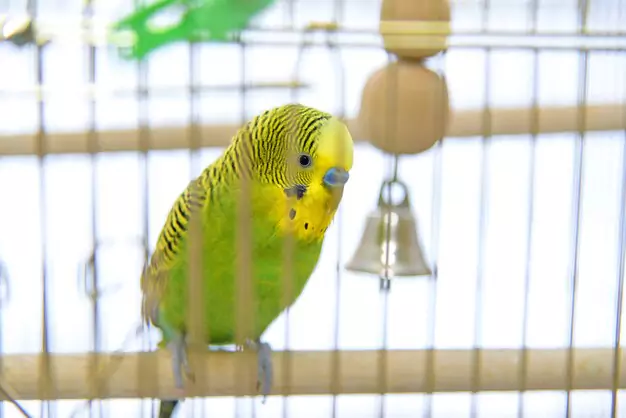
Congratulations on your decision to bring a talking parakeet into your life! Understanding how to maximize the happiness and communication potential of your feathered friend is key to building a strong bond. Let’s recap some important points we discussed throughout this guide.
Understanding Parakeet Sounds and Vocalizations:
Parakeets have a wide range of sounds and vocalizations that they use to communicate. By familiarizing yourself with these different noises, you can better understand what your parakeet is trying to convey.
Timeframe and Lifespan of Talking Parakeets:
It’s important to remember that teaching a parakeet to talk requires patience and consistency. While some birds may start speaking within a few weeks, others may take several months or even longer. Remember, each bird is unique, so don’t get discouraged if progress seems slow at first.
Factors Affecting Parakeet Talking: Age, Gender, and Time of Day:
The age and gender of your parakeet can influence their ability to learn new words. Younger birds tend to be more receptive to training, while males are often more inclined to mimic human speech. Practicing training sessions during the morning or early afternoon when your parakeet is most active can yield better results.
Can Parakeets Talk? Exploring the Potential for Budgies:
Yes, parakeets (budgies) have the potential to talk! While not all parakeets will develop extensive vocabularies, many can learn a handful of words or phrases with proper training techniques.
The Training Process: How to Teach a Parakeet to Talk:
Training your parakeet involves creating a positive environment and using repetition as the foundation for learning. By consistently reinforcing desired words or phrases through reward-based methods, you can encourage your bird’s linguistic abilities.
Effective Techniques for Training Parakeets to Talk:
Throughout this guide, we explored various effective techniques for training parakeets to talk. These methods include mimicking your parakeet’s sounds, using recordings, and providing visual aids.
Choosing the Right Words: Phrase Selection for Parakeet Talking:
When selecting words or phrases to teach your parakeet, it’s important to choose ones that are clear, distinct, and easy for your bird to pronounce. Simple greetings or short phrases often work best.
Step-by-Step Approach: Repetition and Simple Word Training:
By breaking down the training process into manageable steps and consistently repeating words or phrases, you can help your parakeet develop their talking skills. Remember to be patient and celebrate even small achievements along the way.
Building a Bond: Recognition and Interaction with Your Talking Parakeet:
Training your parakeet to talk is not just about language acquisition but also about building a strong bond with your feathered companion. Spend quality time interacting with your bird outside of training sessions to foster trust and deepen your connection.
Interpreting Parakeet Behavior and Sounds: Insights into Well-being:
Understanding your parakeet’s behavior and vocalizations is crucial for ensuring their overall well-being. Pay attention to changes in their sounds or actions as they may indicate happiness, stress, or potential health issues.
Now that you have a better understanding of how to maximize happiness with your talking parakeet, it’s time to put these principles into action! Embrace the journey of training and bonding with your feathered friend – remember that patience, consistency, and love are key ingredients in this endeavor.
FAQs
How long does it take for a parakeet to start talking?
The timeframe for a parakeet to start talking varies from bird to bird. While some may begin speaking within weeks of consistent training, others may take several months or longer before uttering their first words. Remember to be patient and consistent in your training efforts.
Can all parakeets learn to talk?
While not all parakeets will develop extensive vocabularies, most have the potential to learn a few words or phrases with proper training techniques. However, it’s important to note that individual birds may differ in their aptitude for talking.
What are some common words or phrases that parakeets can learn?
Parakeets can learn a variety of words and phrases, but it’s best to start with simple greetings or short expressions. Common examples include “hello,” “goodbye,” “pretty bird,” or the bird’s name. Choose words that are clear and distinct for better results.
How often should I train my parakeet to talk?
Consistency is key when training your parakeet to talk. Aim for short daily training sessions of around 10-15 minutes. Regular practice helps reinforce learning and maintain your bird’s interest without overwhelming them.
Are there any specific tips for teaching older parakeets to talk?
Older parakeets can still learn to talk, but they may require more patience and persistence compared to younger birds.








